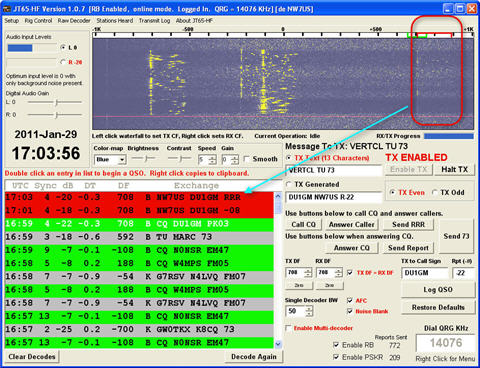I posted this message in the Technical forum, because of the technical information I have at my JT65A webpage. I think that I should post this here, as well... I hope you don't mind the duplication.
If you have not yet tried out JT65A, I'd like to introduce this digital mode to you. The links, below, give the technical and operational details.
Have you ever wondered how much of the noise you hear on the HF bands is actually comprised of signals too weak to be copied? JT65A is a weak-signal digital mode that allows you to pull great DX out from under the noise on the high frequency spectrum. The JT65A communications protocol was conceived and first implemented by Joe Taylor, K1JT. Joe, a Professor Emeritus of physics at Princeton University, shares a Nobel Prize with Russell Alan Hulse (ex-WB2LAV) for the discovery of the first pulsar in a binary system as well as the first confirmation of the existence of gravitational radiation in the amount and with the properties first predicted by Albert Einstein. Joe has contributed to the amateur radio community in much the same way, changing the playing field for weak-signal operation.

( See a video where I use JT65A:
http://g.nw7us.us/138gMgD )
JT65A is actually a "sub-mode" of Joe's original JT65 protocol, which he designed to optimize EME contacts on the HF and VHF bands. JT65 includes error-correcting features that make it very robust, even with signals much too weak to be heard. It was later realized that this protocol, with some adaptation, would also be very usable for terrestrial HF communications.
I have a page dedicated to information regarding JT65A:
http://nw7us.us/jt65a.htmlJoin the Facebook community for JT65A here:
https://www.facebook.com/jt65mode